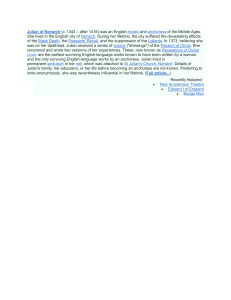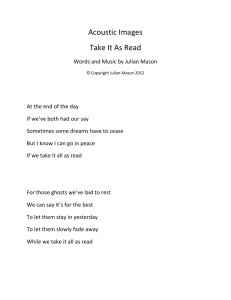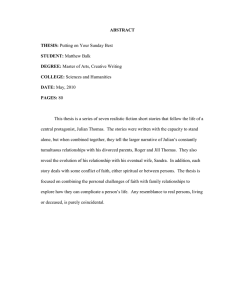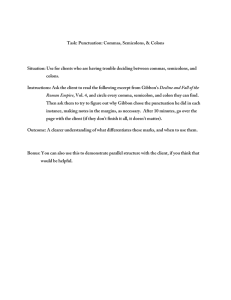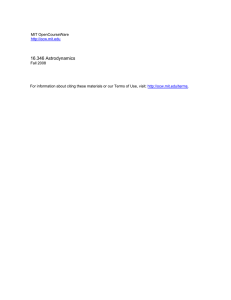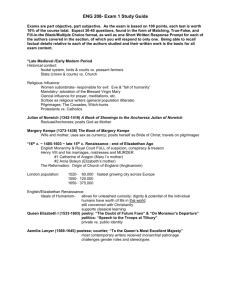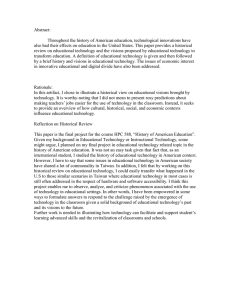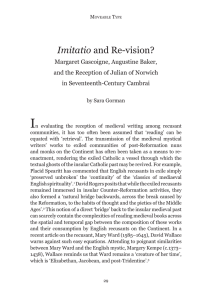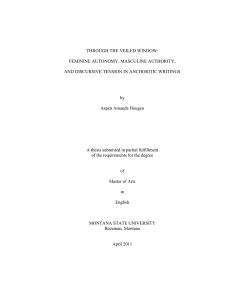Revelations of Divine Love Biographical details • first English woman visionary
advertisement
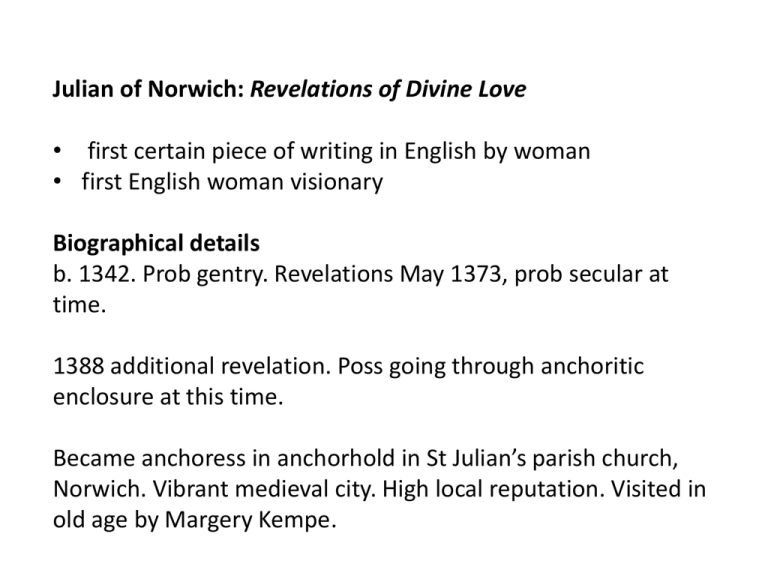
Julian of Norwich: Revelations of Divine Love • first certain piece of writing in English by woman • first English woman visionary Biographical details b. 1342. Prob gentry. Revelations May 1373, prob secular at time. 1388 additional revelation. Poss going through anchoritic enclosure at this time. Became anchoress in anchorhold in St Julian’s parish church, Norwich. Vibrant medieval city. High local reputation. Visited in old age by Margery Kempe. Writing in visionary genre, particularly used by women in Middle Ages. • Famous continental woman visionaries whose visions translated and circulated in England: Hildegard of Bingen, St Bridget of Sweden, St Catherine of Siena, Elizabeth of Hungary, Mechthild of Hackeborn. But no English tradition on which to draw. • A genre based on personal experience. Suited to women excluded from Latinate clerical culture. Hence, Julian doesn’t cite bible or patristic writers. Authority claimed from divine revelation. • Visionary in cataphatic sense: about what can be seen and heard. As opposed to apophatic: about what is not known about God. Cloud of Unknowing only example of this in England. • Claims made by critics: these are not only visions but also vernacular theology. Argued that Julian should be viewed as a formidable vernacular theologian. • Subjects her visions to layers of interpretation and exegesis (ie uses scholastic hermeneutics) • Julian describes herself as ‘unlettered’, prob only means couldn’t read Latin. Theological knowledge poss from vernacular anthologies. • Remarkably, not addressing monks/nuns, but apparently general Christian audience. A demotic theology. Unprecedented to write theology in vernacular for laity. Two texts: • Short Text (1388). Just the series of visions of Christ on cross. Largely factual. Julian describes herself as ‘lewed and feeble’ woman. • Long Text (1390s-1416). 6 x longer. Many additional layers of commentary and interpretation. Lord and servant parable, and ‘motherhood of Christ’ added at this stage. Deletes gender refs. • Virtually unknown through 15th and 16th c., unlike other English mystics (Richard Rolle, Walter Hilton, Cloud author) • 1 mid-15th c MS of short text, read exclusively within Carthusian milieu. • 1 MS with excerpts of Long Text (1500). + 2 17th c MSS copied in English Benedictine convents in France. Unknown until 20th c. • Edited and translated into modern English in 1901 • Known to modern age through TSEliot’s quotation of her: ‘All shall be well’, in Four Quartets. • Since 1950s, increasing in popularity, both in academic circles, and in Anglican and Catholic devotional culture. • Many popular editions, epitomising her sayings, constructing her in various ways (feminist, ecumenist, interfaith, monastic, mystic)
